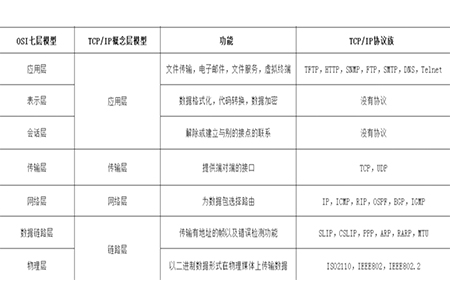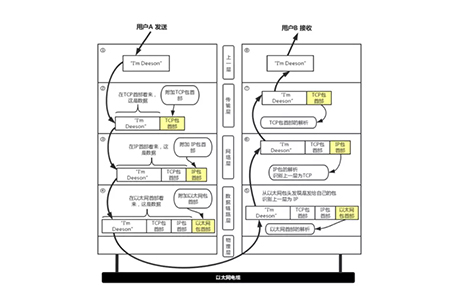Home >Common Problem >What is tcp/ip protocol
What is tcp/ip protocol
- 清浅Original
- 2019-03-06 14:50:05182345browse
TCP/IP protocol is the sum of a series of network protocols, which defines how electronic devices connect to the Internet and how data is transmitted to each other. In the TCP/IP protocol, the network can be divided into four layers, namely application layer, transport layer, network layer and link layer.

TCP/IP protocol is the sum of a series of network protocols. It defines how electronic devices connect to the Internet and how data is transmitted to each other. In TCP/IP In the IP protocol, the network can be divided into four layers: application layer, transport layer, network layer and link layer.
[Recommended course: TCP/IP Tutorial]
The meaning of the protocol
Network protocol is a collection of rules, standards or conventions established for data exchange in computer networks. It is composed of three elements, namely:
(1) Semantics. Semantics is the interpretation of the meaning of each part of the control information. It specifies what control information needs to be sent, as well as the completed actions and responses. (Indicates what to do)
(2) Grammar. Syntax is the structure and format of user data and control information, as well as the order in which the data appears. (Indicate what to do)
(3) Timing. Chronology is a detailed description of the order in which events occur. (Also known as "synchronization"). (Indicates the order of doing it)
The TCP/IP protocol is the sum of a series of network protocols. Next, I will introduce to you in detail what the TCP/IP protocol is in the article
TCP /IP Protocol
TCP/IP protocol is the sum of a series of network protocols; it defines how electronic devices connect to the Internet and how data is transmitted between them.
According to the TCP/IP protocol, we can divide the network into four layers, namely the application layer, the transport layer, the network layer and the link layer. In the ISO model, the network can be divided into seven layers, namely application layer, presentation layer, session layer, transport layer, network layer, data link layer and physical layer. For the convenience of research, the network is generally divided into five layers, namely application layer, transport layer, network layer, data link layer and physical layer.
The role of TCP/IP protocol
The TCP/IP protocol solves the problem of how to transmit data from one host to another on the Internet.
The various layers of TCP/IP protocol and their functions

How each layer works of?

Example: For example, when we enter "Hello" in the QQ input box and then click send, what happens during this period?
1. The data is processed at the application layer, such as splicing the sender, sending time, sending content and other information into sender: sending time: sending content and sending it to the other party; of course, it is not that simple in fact. Just think about the http protocol.
2. The data processed in the application layer comes to the transport layer. In addition to being responsible for which program (port) the data is sent to, this layer is also responsible for providing reliable transmission if the TCP protocol is connected. In order to implement these functions, TCP headers need to be added.
3. The data processed at the transport layer comes to the network layer. This layer is responsible for which host the data should be transmitted to, that is, adding the IP of the other host, so we have to give the packets coming to the network layer Add an IP protocol header. After the IP packet is generated, refer to the routing control table to determine the route or host that accepts the IP packet.
4. The IP packet arrives at the data link layer and is encapsulated into an Ethernet frame. The Ethernet frame actually has an additional MAC address of the other party. The generated Ethernet data frame will be transmitted to the receiving end through the physical layer.
5. After the other host receives the data link frame, it parses the receiving mac address of the frame. If the mac frame is passed to itself, it accepts the frame and passes it to the upper layer, otherwise it Frames are dropped.
6. The IP module performs similar processing after receiving the data. Determine whether this IP address matches your own IP address from the packet header. If it matches, the data will be sent to the corresponding module according to the protocol type of the header, such as TCP and UDP. The example here is TCP. For situations where there is a router, the receiving end address is often not your own address. In this case, you need to use the routing control table to investigate the host or router to which the data should be sent before forwarding the data.
7. In the TCP module, the checksum will first be calculated to determine whether the data is damaged. Then check whether the data is being received according to the sequence number. Finally check the port number to identify the specific application. After the data is completely received, it is passed to the application identified by the port number.
8. The application layer parses the information after receiving it, and then displays it.
The above is the detailed content of What is tcp/ip protocol. For more information, please follow other related articles on the PHP Chinese website!

